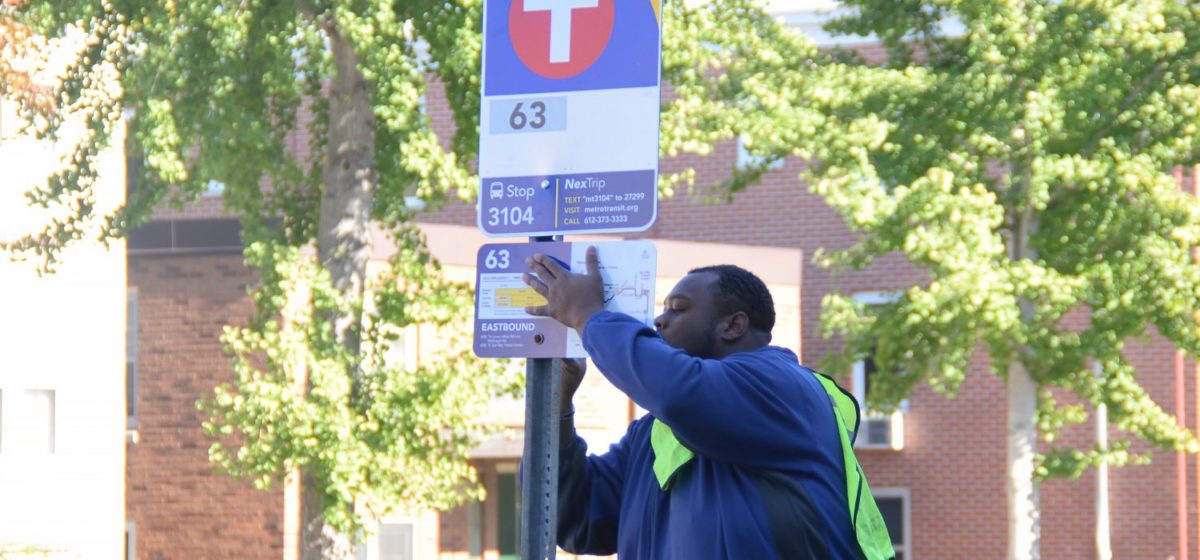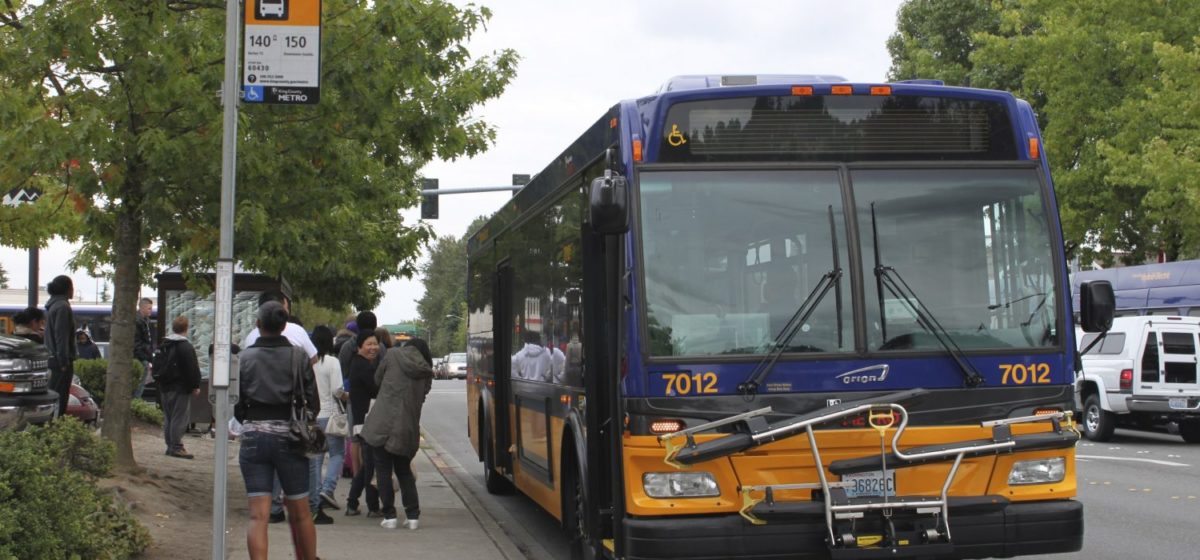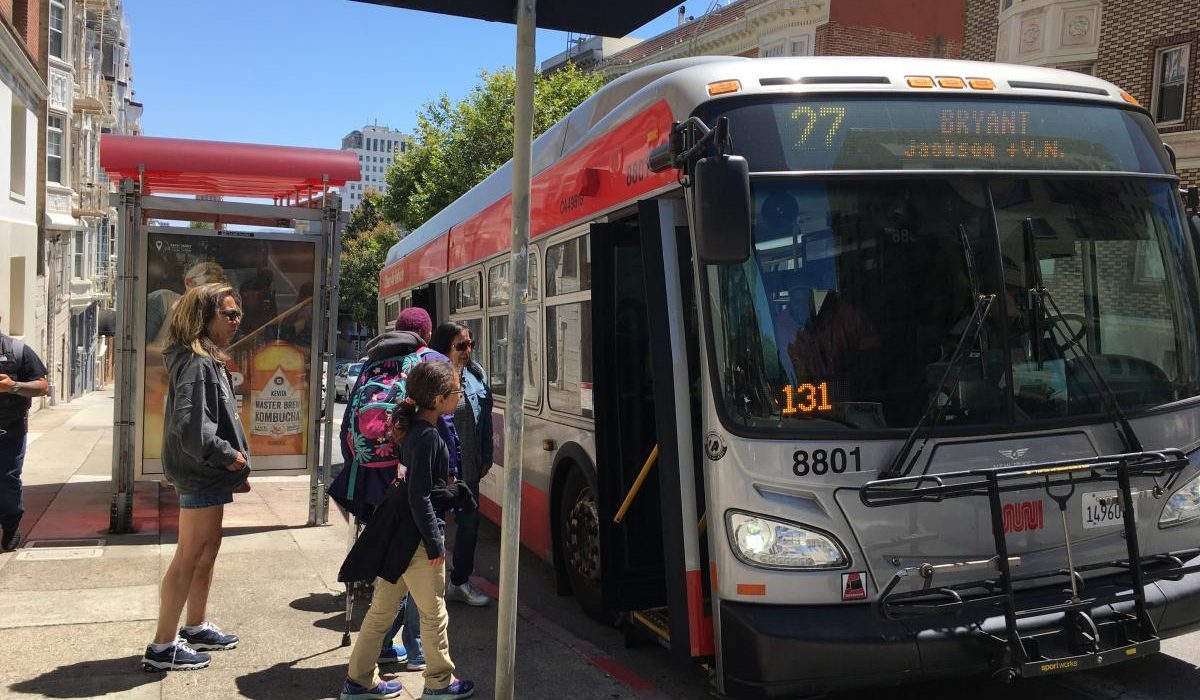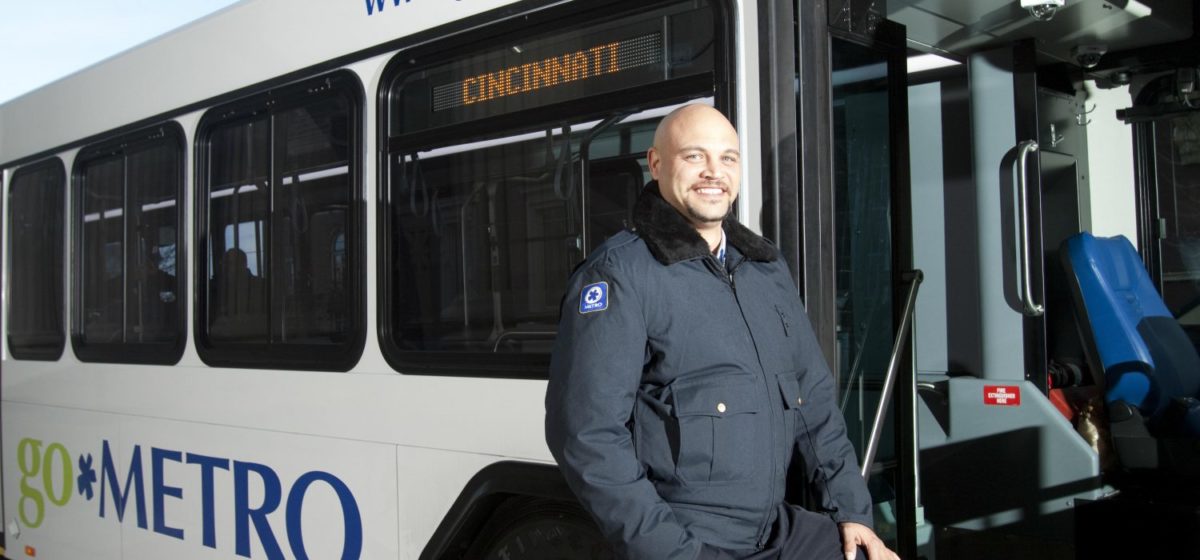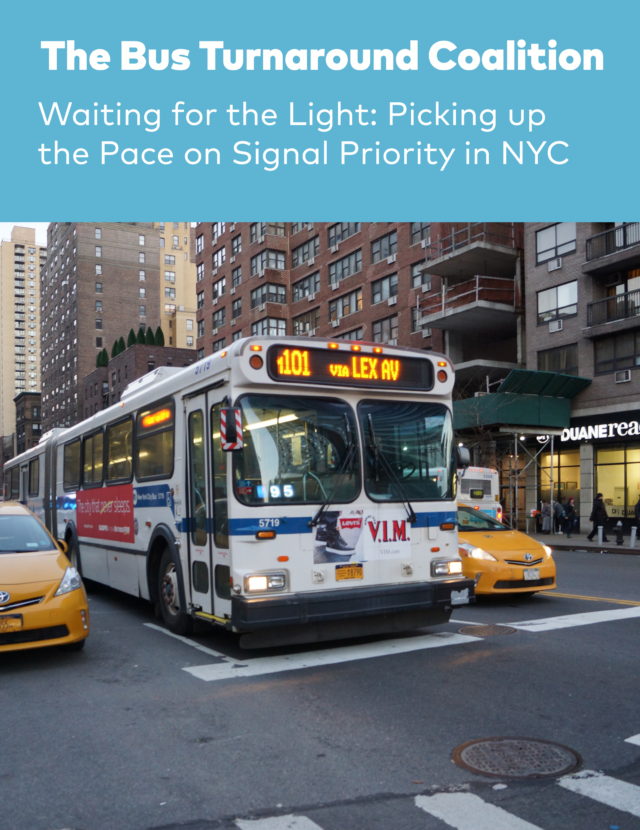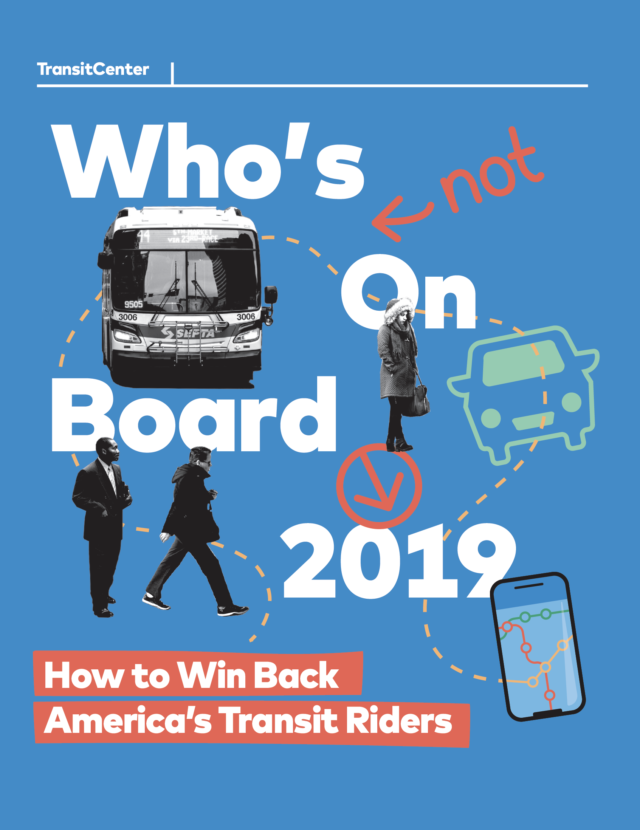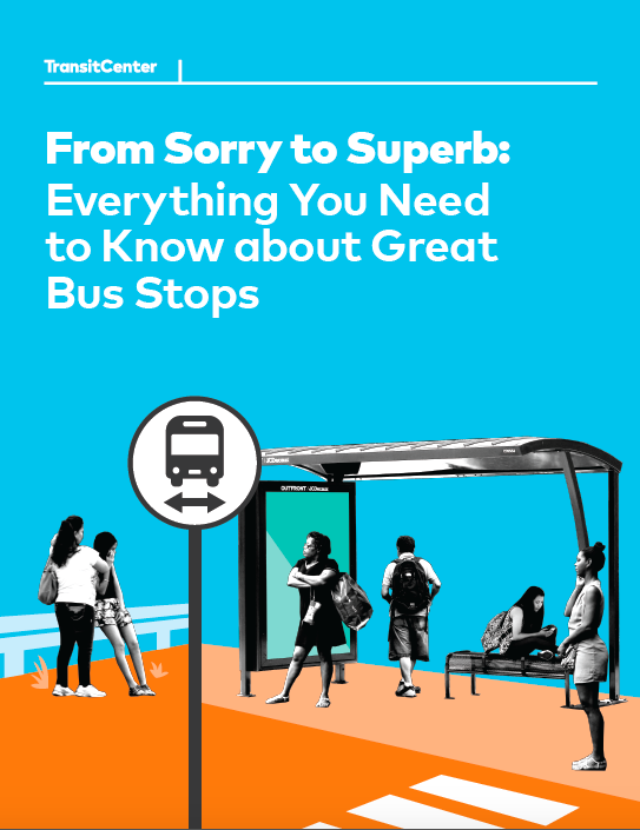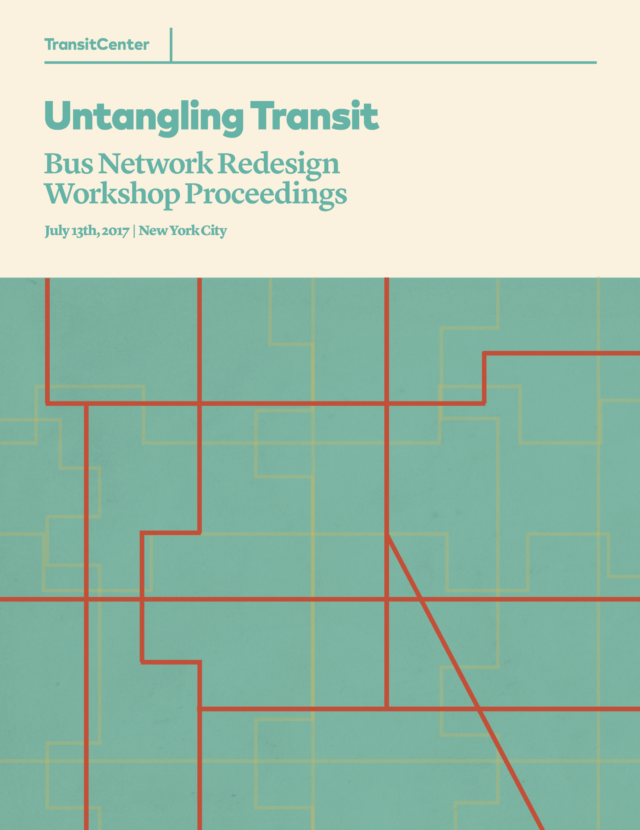Introduction
America’s bus stops are too close together. In many cities, it’s not uncommon to see bus stops every other block — or even closer. Given that buses spend 20% of their time at stops, reducing the overall number of stops can dramatically speed trips for riders.
TransitCenter surveys consistently find that what transit riders value above all is getting from A to B as quickly as possible. One of the simplest and most cost-effective ways to improve trip time is by extending the average distance between bus stops — otherwise known as bus stop balancing, consolidation, or optimization.
In San Francisco, SFMTA increased bus speeds 4.4% – 14% on routes by shifting stop spacing from nearly 6 stops per mile to 2.5 stops per mile. In Portland, Oregon, travel times improved 5.7% when TriMet increased stop spacing by an average of 90 feet along one of its busiest routes, according to researchers at McGill University. Bus stop balancing was cited as the “most successful action taken” to improve bus speeds by agencies surveyed in TCRP Synthesis 110, Commonsense Approaches to Improving Transit Bus Speeds.
Riders sense that bad bus stop spacing slows them down. At a series of public workshops conducted by New York City Transit, 63% of Bronx bus riders said they would prefer fewer stops.
But bus stop balancing isn’t without friction. Transit riders often feel ownership over their bus stops. Asking people to walk farther to something that used to be at their doorstep can be a tough sell. Making transit faster for more people involves trade-offs, and agency officials need to be prepared for some objections.
To minimize and overcome pushback, transit agencies across the country have found success by approaching bus stop balancing with a comprehensive campaign strategy.
Streetsblog: One Neat Trick to Speed Up Bus Journeys
Bus Stop Balancing: The Video!
Why a Campaign?
A campaign is a purposeful, organized, multi-pronged initiative to create change within a fixed timeline. For transit agencies, adopting a campaign strategy for bus stop balancing entails coordinating across departments, securing sufficient resources to do the job well, crafting a winning message, and engaging directly with riders.
Using a campaign strategy, agencies like Cincinnati Metro and Gold Coast Transit in Ventura, California, successfully consolidated stops and sped up trips for thousands of riders with minimal complaints or opposition. Agency leadership committed the staff time and funding to position the bus stop balancing initiatives for success.
In contrast, when bus stop balancing is housed solely within a transit agency’s planning division — as is often the case — the effort tends to fall short. Without the explicit backing of agency executives and political leadership, and lacking the capacity to communicate effectively to riders or to government partners, a self-contained process will fail.
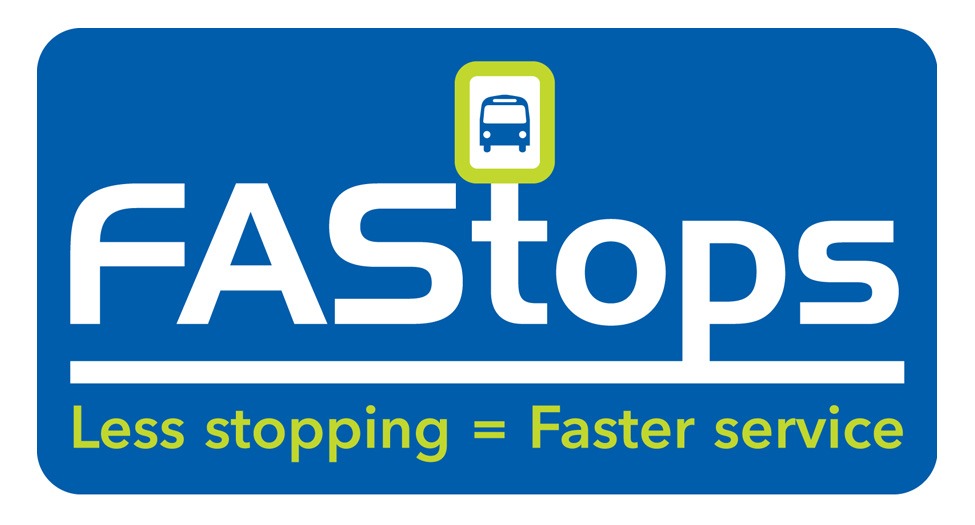
A bus stop balancing initiative in Albuquerque, New Mexico, for example, did not engage elected leaders or the agency’s communications team. Misinformation started swirling, and the effort was put on hold.
This brief shares examples of how a campaign approach to bus stop balancing can overcome the challenges inherent to the task. Through successful bus stop balancing campaigns, agencies can provide quicker, more reliable trips for riders, more amenities at stops, and more comfortable walks to transit.
Campaign Step 1: Prepare
- Get commitments of staff time from multiple departments to enact your campaign
- Survey riders to build the case for bus stop balancing
- Conduct an inventory of accessibility and amenities at bus stops
- Get bus operators involved early
- Be ambitious about the number of stops to remove, assuming that electeds and board members will want to put back stops
- Alert elected officials, board members, and advocates early on
- Commit to funding better amenities at bus stops that aren’t removed
Campaign Step 2: Implement and Communicate
- Identify stops to remove based on clear criteria
- Test your communications with a focus group of riders
- Create an online communications plan
- Own what you’re doing and communicate to riders honestly
- Alert riders who will benefit, not just those whose stops will be moved
- Publicly commit to a timeline to do the whole bus network, even if you implement bus stop balancing route-by-route or district-by-district
Campaign Step 3: Follow-Up
- Tell board members, elected officials, riders, and the press about improvements to travel time and ridership attributable to bus stop balancing
- Make it a habit: Reevaluate stop spacing on a regular basis
Conclusion: Give Riders Service That's Too Good to Pass Up
To make transit useful and attractive to riders, agencies need to speed up bus service. Bus stop balancing is an effective way to achieve that outcome, and agencies have found success with a campaign approach. The foundation of a good bus stop balancing campaign is a commitment from agency leadership to prioritize the initiative and support staff during implementation.
Bus stop balancing always involves tradeoffs. Riders will get to their destinations faster, but some will have to go farther to reach a stop. Transit agencies need to accurately convey how removing bus stops will change travel for all riders affected. Changes must also be clearly communicated to bus operators, who’ll be on the front lines helping riders navigate the new stop pattern.
While bus stop balancing is a powerful tool to improve performance on its own, the benefits will be more apparent to riders — and better received by them — if paired with other upgrades like off-board fare payment, bus lanes, or queue jumps.
While bus stop balancing is a powerful tool to improve performance on its own, the benefits will be more apparent to riders — and better received by them — if paired with other upgrades like off-board fare payment, bus lanes, or queue jumps. The trip to and from the bus stop also has to be safe and comfortable. Transit agencies should work with city street departments to create safer pedestrian access to bus stops and add benches and shelters. Done in concert, these improvements will result in transit service that’s worth going a small distance farther to access. Riders will appreciate the changes and more people will choose the bus.

